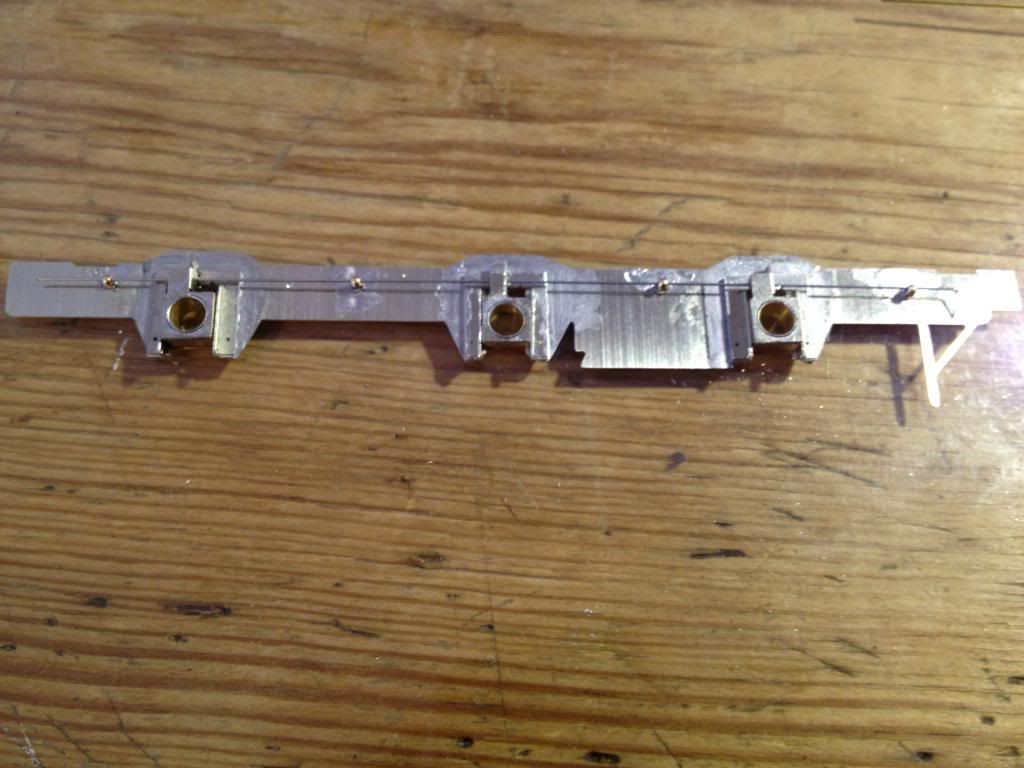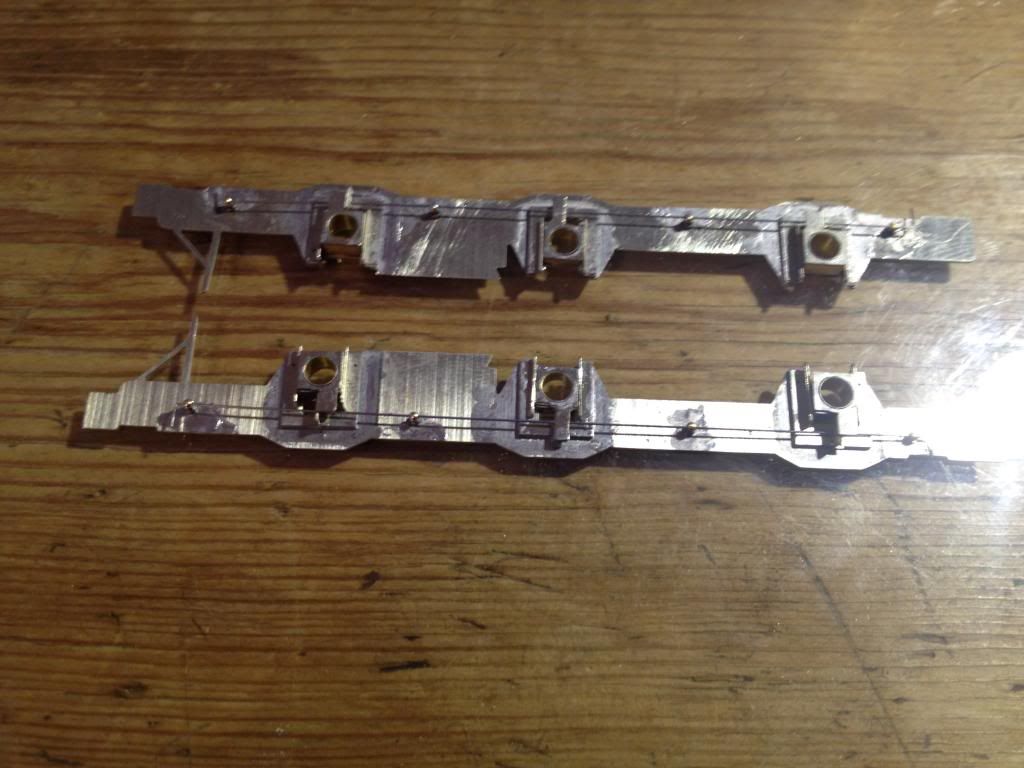One can never have too many projects on the go at once. So lets start a third locomotive, before finishing the other two. This may sound like the worst idea ever, but there is actually some logic behind it. The second locomotive is Duncan's Buffalo. This should be a straightforward job of reassembling the chassis, I'm just not in the mood today. The first locomotive is my 517. The next thing to do on that is to build the chassis. This is starting to sound like a familiar stopping point, but there are other factors involved. Having built a replacement 2mm chassis for a Graham Farish Jinty last autumn I have become quite a fan of split chassis. I have decided I wanted to build my EM locomotives with split chassis from here on. The other thing I have been wanting to try out is CSB suspension. The combination of theses two new techniques led me to believe that a 0-4-2 was not the wheel arrangement to practice on.
Enter the 850 Pannier Tank. I mentioned in a previous post that as a poor student complete kits were beyond my reach. This is still the case and this kit, while now complete, is no exception. This was an affordable ebay purchase in that there were a few bits missing and the bidding didn't go too high. The chassis and wheels were missing along with, as it turned out, the footplate. All the castings were present and untouched. I was undeterred by missing bits, I figured that the wheels would be available from Alan Gibson and they do milled frames for an 850 so no problem. Upon receiving the kit I looked trough it and found that the footplate was also missing. Damn.
An email followed by a phone call to Alan Gibson resulted in wheels, crankpins, and a complete set of etches arriving through my door just before exams began. Everything was placed carefully in the box to await my freedom. At a rather excellent RailEx over the weekend I visited High Level and left the stand with a rather empty bank account but a bag full of goodies. These included three gearboxes, lots of hornblocks, CSB tags, and his CSB jig.
The first step is to determine the correct position of the fulcrums for the springy beam. This is where a lot of people give up as there is some fairly complicated maths involved. Luckily, someone has already done the maths and all that's actually needed is to plug the numbers into an Excel spreadsheet. First the axle loads need to be determined. Ideally these should be even and I see no reason why they won't at lest be close to even on this locomotive. The sprung weight needs to be determined, so everything except the wheels, motor and gearbox was dumped on a scale. This does include the etches that will be discarded but it doesn't include any extra weight I may add, so it's close enough. The total weight was divided by the number of axles to give the axle weight. This was entered into the Excel followed by the wheelbase in mm. After that a blind stab at fulcrum points was taken. The final input is the wire used as a spring. The default happens to be the same steel wire I have been using for Alex Jackson couplings, so I left it alone.
The spreadsheet provides figures for the maximum deflection of each axle. The actual deflection doesn't really matter but was does matter is that all of them are even. The positions of the fulcrums are adjusted until all three deflections are even. The High Level jig is marked out in 0.5mm increments, so I left it at that rather than balancing it perfectly but being unable to actually produce it.
On to actual building!
The frames were released from their etch and offered to the CSB jig. The jig is quite simple in design and use. Two round bearings are used at a time, one in the centre of the jig and the other in an adjacent axle. Small holes were drilled for the fulcrums which, with the jig removed were enlarged to the correct size. I am using Alan Gibson short handrail knobs as fulcrums. Everything has gone together quite easily, mostly due to the brilliance of High Level's designs. I determined that the middle axle will be the easiest to drive, the rear would interfere with the cab too much. So Spacesaver hornblocks were fitted to the middle axle with standard hornblocks at both ends. Unfortunately It was at this point I realized that I hadn't taken any pictures yet. So there is one of the first frame and one of the two together.


That's it for now. I'll put it together in the next few days.
-
 5
5



9 Comments
Recommended Comments
Create an account or sign in to comment
You need to be a member in order to leave a comment
Create an account
Sign up for a new account in our community. It's easy!
Register a new accountSign in
Already have an account? Sign in here.
Sign In Now